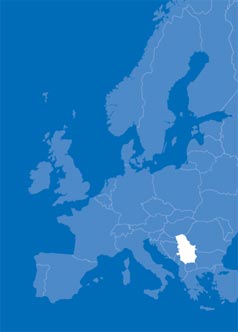Geographic location

Serbiais a landlocked country situated insoutheastern Europe, in the centre of theBalkan Peninsula, between41°53′and46°11′latitude North and18°49′and23°00′longtitude East. BecauseSerbia covers part of the Pannonian Plain in the north, the country also belongs to Central Europe, while due to its southern region, in terms of geography and climate,Serbia is also considered a Mediterranean country.
Serbiastands at the crossroads of Eastern and Western Europe, its routes leading via the Morava-Vardar and Nišava-Marica valleys to the Aegean coast, to Asia Minor and to the Middle East. EuropeanTransport Corridors 7 (the Danube) and10(road and rail) pass throughSerbia and meet inBelgrade.
Belgrade, the Serbian capital, lies on the Danube, a waterway connecting Western and Central European countries with the countries of Southeastern and Eastern Europe. Its harbour is visited by ships from the Black Sea, and with the opening of the Rhine-Main-Danube Canal it became a central point of the most important waterway in Europe which extends from the North Sea and the Atlantic Ocean all the way to the Black Sea. The Belgrade-Bar railway line connects the city with the Adriatic Sea and Belgrade’s Nikola Tesla Airport is a hub for key European air routes.
Serbia’s borders are 2114.2 km in length. Serbia borders Bulgaria to the east, Romania to the northeast, Hungary to the north, Croatia and Bosnia and Herzegovina to the west, Montenegro to the southwest and Albania and Macedonia to the south.
